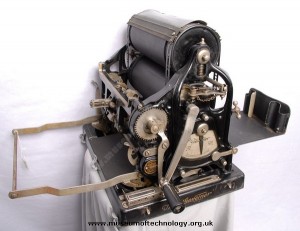Gestetner : Stencile Duplicator Machine milik UBAYA (circa 1950′s)
Gambar 1 dan 2 : Stencile Duplicator Machine Gestetner milik UBAYA ketika dipamerkan dalam acara UBAYA HERITAGE tahun 2013 lalu.
Mesin ini merupakan warisan dari Universitas Trisakti Surabaya ( 1966-1968 ) sebelum berganti nama menjadi Universitas Surabaya pada tanggal 16 April 1968 berdasar Akta Notaris Djoko Soepadmo, S.H. No. 25 Tgl 16 April 1968. Mesin ini merupakan mesin cetak manual sederhana dan sebagai cikal bakal otomasi perkantoran di dunia. Universitas Surabaya menggunakannya untuk keperluan penggandaan dokumen, bahan kuliah dan bahan ujian mahasiswa. Gestetner tersebut diperkirakan diimport langsung dari negeri Belanda karena mesin yang dimiliki Universitas Surabaya masih mencantumkan label bertuliskan H. Vermeulen & Co 59161 postweg noord weltevreden java, nama sebuah firma perdagangan di Netherland.
SEJARAH SINGKAT
Gestetner merupakan orang Hungaria bernama asli David Gestetner yang menorehkan tinta sejarah di daratan Inggris dengan penemuan spektakulernya yaitu stencil duplicating machine atau mesin duplikator stensil. Pada tahun 1881, Gestetner menemukan apa yang dinamakan wax coated paper yang digunakan dalam pembuatan mainan anak-anak. Bahan tersebut juga digunakan sebagai bahan pembuat tinta stensil. Sejak itu lahir apa yang dinamakan mesin stensil kantor ciptaan Gestetner. Mesin stensil pertama dipublikasikan oleh Gestetner pada tahun 1890 dan diklaim dapat mencetak 1200 lembar copy dokumen dalam waktu satu jam. Sejak itu mesin stencil merk Gestetner mulai dipasarkan di seluruh dunia dengan pabriknya di Tottenham, Nort London England hingga tahun 1970.
Gambar 3 : GESTETNER DUPLICATOR, 1950′s
At a young age Gestetner began to work at the stock market in Vienna. One of his tasks was to make copies of the stock market activity at the end of the day by copying the results over and over for each copy. He decided that there had to be a better method, and his experiments eventually led him to invent the first method of reproducing documents by use of a stencil.
Sumber : museum of technology
Berikut Summary mesin tersebut yang diambil dari Museum Victoria.
- Summary:
- Gestetner Cyclostyle No 6 Duplicator, circa 1913 with paper feeder and case.This is a two drum rotary stencil machine. A stencil, in poor condition, is still attached. The double-drum design inked the stencil with rollers, which picked up the ink from a tube.In 1881, David Gestetner (1854-1939) invented a simple stencil perforator using what was called the Cyclostyle pen which had a tiny toothed wheel on the end. The wheel was rolled along, punching tiny perforations in a sheet of wax coated paper. The next step forward the Rotary Cyclostyle in 1901. This was a rotary stencil machines allowing copies to be rolled out on a continuous basis. This discovery was the birth of office automation.Gestetner set up a business to manufacture duplicators in Tottenham, North London, England.A plate on back of machine includes this caution:
‘Each sheet of Rotary Cyclostyle Paper and each Tube of Ink must bear my signature as follows
D. Gestetner’ - Description:
- Drum duplicator with paper feeder and case.
| Discipline: | Technology |
| Dimensions: | 34 cm (Height), 45 cm (Width), 32 cm (Length) |
Gestetner Milik Universitas Surabaya
http://www.youtube.com/watch?v=nLZltcpwBHQ
sumber : Youtube/Pusat Arsip dan Museum Ubaya
Ini adalah proses pembuatan alat tersebut dan cara kerja mesin Gestetner.
http://www.youtube.com/watch?v=2TSVuH5yiFo
sumber : youtube/British Pathé




